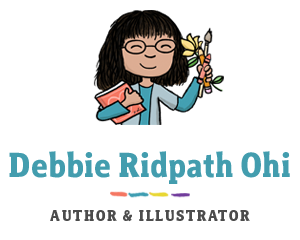FAQ: Tech-Specific (Tools, Format, etc)
INDEX:
What tools do you currently use in your illustration work?
What tools do you currently use in your writing work?
How do I format my illustrations for print?
If I start with physical/non-digital art, how can I convert to digital format?
Q. What tools do you currently use in your illustration work?
For my picture book illustration work, I mainly use the following tools:
- Adobe Photoshop, as part Adobe’s Creative Cloud suite. Expensive, but I do use several of the apps in this collection including Premiere Pro, After Effects, and others.
- Wacom Intuos Drawing Tablet: I have an older model which is no longer available (I just checked!)
Depending on the project and stage of the project, I have also used:
- Ordinary paper and pencil for initial character and thumbnail sketches.
- Procreate on my iPad Pro with an Apple Pencil.
- Create textures with real-life and digital methods (I am constantly experimenting)
Q. What tools do you currently use in your writing work?
For my writing (whether for picture books, novels, or other types of writing), my tools vary…depends on the project, my mood, and also where I am (if I’m on the road, for instance). Just some of the tools I have used:
- Obsidian. This is my main note-taking and project management app (including for my book illustration projects), and I am also using it for some parts of my writing process. Syncs across all my devices.
- Drafts. Because Drafts syncs across all my devices and also enables me to use Markdown (so easily integrates with Obsidian), I use this for freewriting, jotting down drafts for social media posts, scene writing and brainstorming for my novels.
- Microsoft Word and Apple Pages. I tend to only use these when I have to.
Q. How do you format your illustrations for print? (eg resolution, file type)
I create my picture book art in Adobe Photoshop in CMYK format at 300 dpi. Dimensions depend on the size of the book. For my own solo picture books with Simon & Schuster Children’s, I format for a 10″ x 10″ page size, but add an inch or two around the edges in my file to give my AD some flexibility in cropping.
When sending preliminary sketches to my art director at Simon & Schuster, I send in much lower res format, though. I usually assemble in a PDF to make it easier for my AD to browse.
Best way to make sure you have the correct specs, however, is to verify details with your art director. If you are using an online service for prints, etc., then most good printing services will include specs about recommended resolution and file types.
Q. If I start with physical/non-digital art, how can I convert to digital format?
I’ve been asked this several times, but I’m not the best person to answer this question since I usually move to digital format very early in my illustration process.
There is a TON of info online about how artists scan their physical art to digital format. One suggestion: go to the KidLitArtists blog (a blog where some of the SCBWI Illustration Mentees used to post about the craft and biz of illustrating children’s books) and search for the term “scanning” for useful tips.

